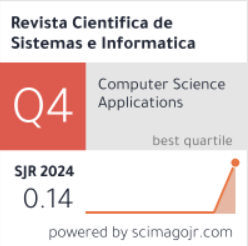Arabic writer identification for children using optimized adversarial-attention and dynamic hybrid classification
DOI:
https://doi.org/10.51252/rcsi.v4i2.642Keywords:
machine learning, variational autoencoders, BPOA, DenseNet, ResNetAbstract
Arabic handwriting recognition is an essential domain in computer vision research. However, its complexity, the intricate nature, varied writing techniques, and overlapping vocabulary of texts have resulted in a scarcity of published studies in this field. This paper proposes a model that addresses Arabic writer identification for children, in which an Adversarial Attention Variational Autoencoder is used for feature extraction and the Binary Pelican Optimization Algorithm is utilized for feature reduction. Additionally, the paper suggests a new classification model through a Dynamically Routed Hybrid Classifier (ResNet + DenseNet). To analyze the performance of the proposed model, the QUWI and Khat datasets were used. The results demonstrate that, for both datasets, a high accuracy of 98.8% is achieved, the highest result among all relevant work described in the paper. This suggests that the system achieves high accuracy and offers a novel way to improve writer identification through the use of optimization algorithms and advanced machine learning techniques.
Downloads
References
Aabed, S., & Khairaldin, A. (2024). An End-to-End, Segmentation-Free, Arabic Handwritten Recognition Model on KHATT. arXiv (Cornell University). https://doi.org/10.48550/arxiv.2406.15329
Ahmad, R., Naz, S., Afzal, M., Rashid, S., Liwicki, M., & Dengel, A. (2020). A Deep Learning based Arabic Script Recognition System: Benchmark on KHAT. The International Arab Journal of Information Technology, 17(3), 299–305. https://doi.org/10.34028/iajit/17/3/3
Altwaijry, N., & Al-Turaiki, I. (2020). Arabic handwriting recognition system using convolutional neural network. Neural Computing and Applications, 33(7), 2249–2261. https://doi.org/10.1007/s00521-020-05070-8
Alrobah, N., & Albahli, S. (2021). A Hybrid Deep Model for Recognizing Arabic Handwritten Characters. IEEE Access, 9, 87058–87069. https://doi.org/10.1109/access.2021.3087647
Bennour, A., Boudraa, M., Siddiqi, I., Al-Sarem, M., Al-Shabi, M., & Ghabban, F. (2024). A deep learning framework for historical manuscripts writer identification using data-driven features. Multimedia Tools and Applications. https://doi.org/10.1007/s11042-024-18187-y
Diaz, M., Ferrer, M. A., Impedovo, D., Malik, M. I., Pirlo, G., & Plamondon, R. (2019). A perspective analysis of handwritten signature technology. ACM Computing Surveys, 51(6), 1–39. https://doi.org/10.1145/3274658
Libo, H., & Jingqi, X. (2024). Increasing the Accuracy of Writer Identification Based on Bee Colony Optimization Algorithm and Hybrid Deep Learning Method. International Journal of Advanced Computer Science and Applications, 15(6). https://doi.org/10.14569/ijacsa.2024.0150631
Maaz, S., & Issa, H. (2020). Using Deep Learning for Arabic Writer Identification. International Journal of Computer Applications, 175(25), 1–7. https://doi.org/10.5120/ijca2020920783
Morera, Á., Sánchez, Á., Vélez, J. F., & Moreno, A. B. (2018). Gender and Handedness Prediction from Offline Handwriting Using Convolutional Neural Networks. Complexity, 2018(1). https://doi.org/10.1155/2018/3891624
Mustafa, M. E., & Khalafallah, M. (2020). A Deep Learning Approach for Handwritten Arabic Names Recognition. International Journal of Advanced Computer Science and Applications, 11(1). https://doi.org/10.14569/ijacsa.2020.0110183
Pawan M., Ritu G., Naveen, Arica N., Priyanka D., Vinay S., Amandeep K. & Kajal S. (2024). Handwriting Detection System Using Brain Net and AI Algorithm. Tuijin Jishu, 45 (1), 2235-2244. https://www.propulsiontechjournal.com/index.php/journal/article/view/4488
Rabaev, I., Alkoran, I., Wattad, O., & Litvak, M. (2022). Automatic Gender and Age Classification from Offline Handwriting with Bilinear ResNet. Sensors, 22(24), 9650. https://doi.org/10.3390/s22249650
Rehman, A., Naz, S., Razzak, M. I., & Hameed, I. A. (2019). Automatic Visual Features for Writer Identification: A Deep Learning Approach. IEEE Access, 7, 17149–17157. https://doi.org/10.1109/access.2018.2890810
Trivedi, P., Heimann, M., Koutra, D., & Thiagarajan, J. J. (2021). Interrogating Paradigms in Self-supervised Graph Representation Learning. In Lawrence Livermore National Lab. (LLNL), Livermore, CA (United States). https://www.osti.gov/biblio/1863175
Trojovský, P., & Dehghani, M. (2022). Pelican Optimization Algorithm: A Novel Nature-Inspired Algorithm for Engineering Applications. Sensors, 22(3), 855. https://doi.org/10.3390/s22030855
Ullah, Z., & Jamjoom, M. (2022). An intelligent approach for Arabic handwritten letter recognition using convolutional neural network. PeerJ Computer Science, 8, e995. https://doi.org/10.7717/peerj-cs.995
Younis, M. T., Younus, Y. T., Hasoon, J. N., Fadhil, A. H., & Mostafa, S. A. (2022). An accurate Alzheimer’s disease detection using a developed convolutional neural network model. Bulletin of Electrical Engineering and Informatics, 11(4), 2005–2012. https://doi.org/10.11591/eei.v11i4.3659
Zhang, J., Yu, X., Lei, X., & Wu, C. (2022). A novel CapsNet neural network based on MobileNetV2 structure for robot image classification. Frontiers in Neurorobotics, 16. https://doi.org/10.3389/fnbot.2022.1007939

Downloads
Published
How to Cite
Issue
Section
License
Copyright (c) 2024 Worood Najem, Tahrir Muhanad

This work is licensed under a Creative Commons Attribution 4.0 International License.
The authors retain their rights:
a. The authors retain their trademark and patent rights, as well as any process or procedure described in the article.
b. The authors retain the right to share, copy, distribute, execute and publicly communicate the article published in the Revista Científica de Sistemas e Informática (RCSI) (for example, place it in an institutional repository or publish it in a book), with an acknowledgment of its initial publication in the RCSI.
c. Authors retain the right to make a subsequent publication of their work, to use the article or any part of it (for example: a compilation of their works, notes for conferences, thesis, or for a book), provided that they indicate the source of publication (authors of the work, journal, volume, number and date).









